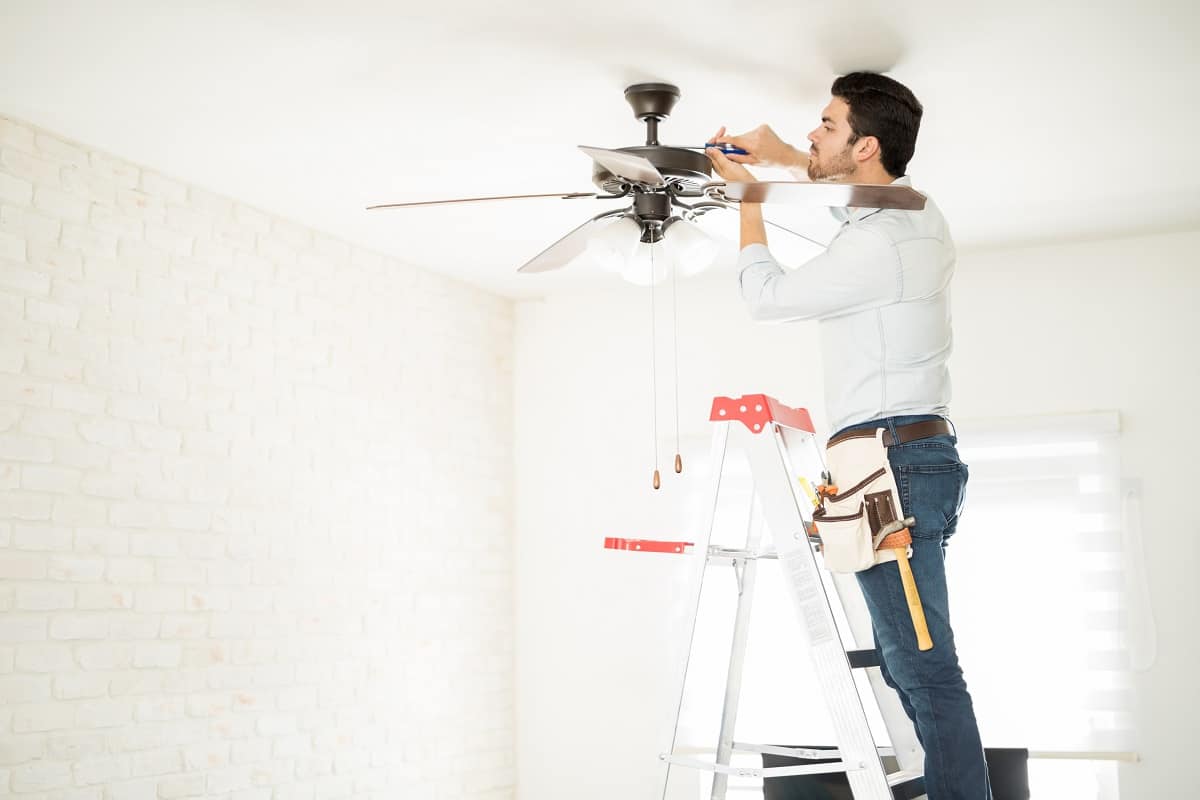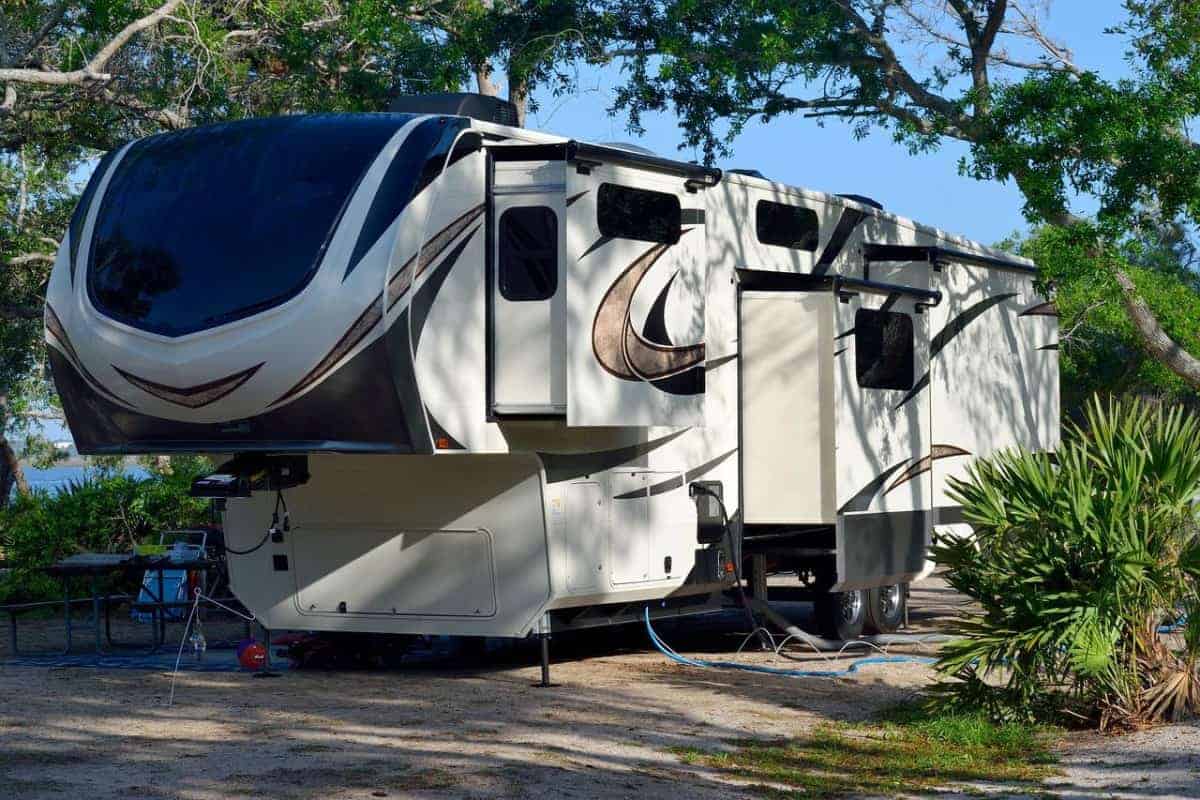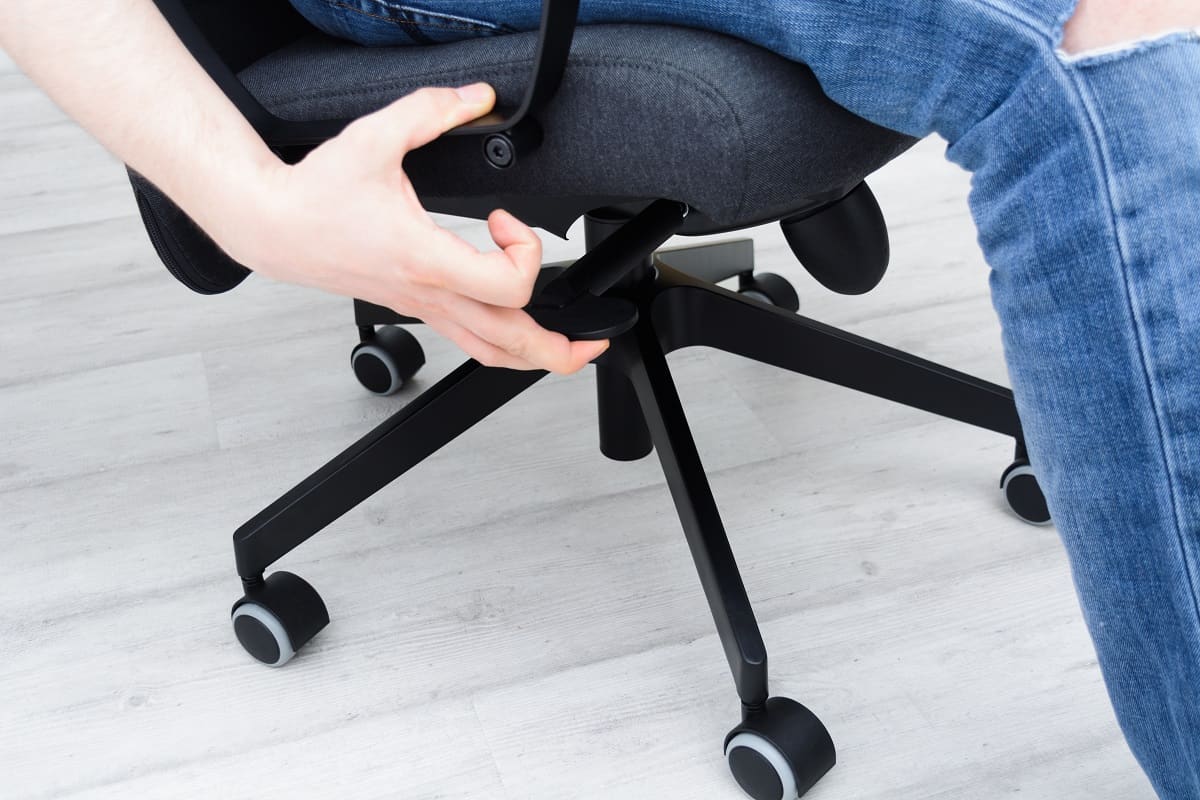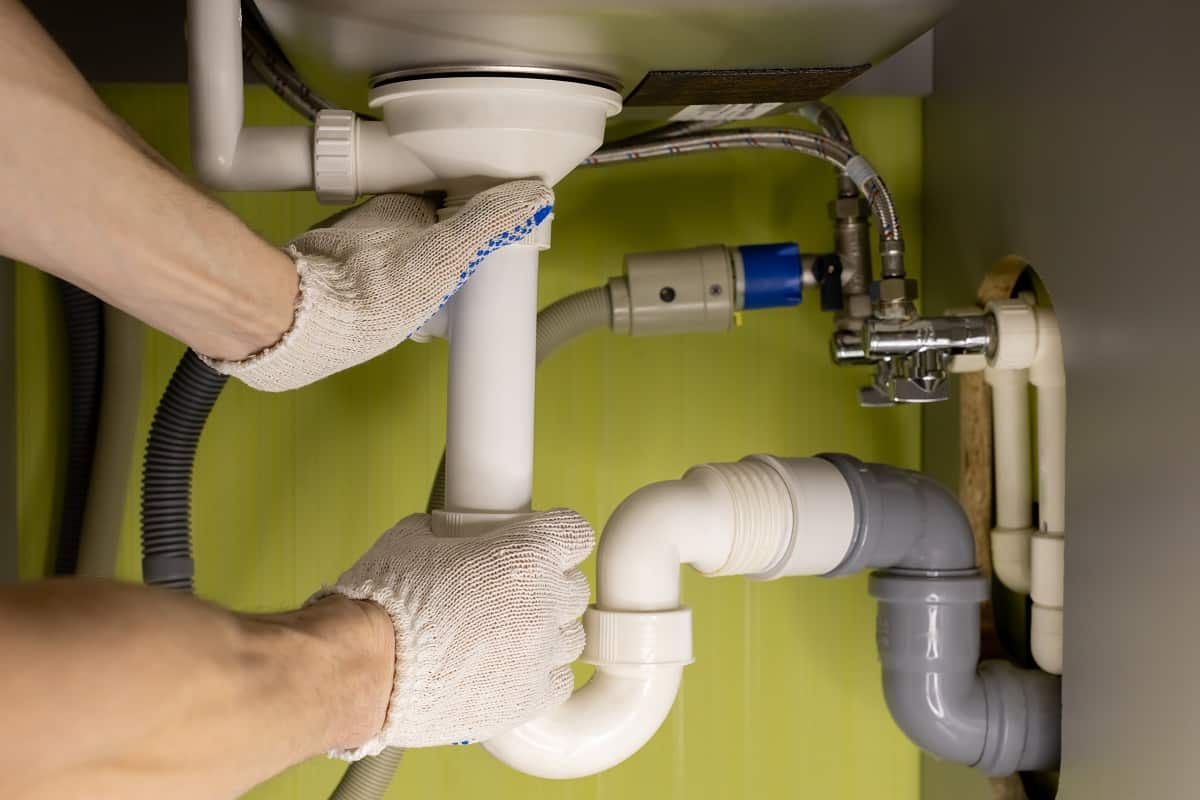A ceiling fan is an important appliance for any home. They keep the room cool and circulate air, which can provide relief from heat or discomfort that might be brought on by humidity. They are especially useful for people whose bodies are prone to overheating.
But time takes its toll on them. Ceiling fans can click and make a lot of noise as they age. If your ceiling fan is clicking, it’s important to fix the issue as soon as possible.
No matter what the problem is, it’s important to address it as soon as possible before it gets worse and causes even more damage.
However, many people do not know how to fix a clicking ceiling fan. Fortunately, there are some easy steps you can take to make sure your fan works properly and won’t cause problems in the future.
We are going to see these steps in this article. You don’t need to call a professional right away when your ceiling fan starts clicking. If you are comfortable doing basic DIY repairs, you can save yourself the money and learn something in the process.
Editor’s note: this article is going to focus on clicking fans. But there are other sounds your fan could make, such as humming. But here we are concerned with fixing a clicking fan.
Potential Causes of Clicking Ceiling Fans
Before you can fix the issue, it’s important to determine what is causing your ceiling fan to click and make noise. There are several ways that you might be able to do this by yourself without calling a professional.
There are several potential causes for this problem. To determine the cause, you can take the following steps:
Before starting: Turn off the fan and unplug it from the outlet. You don’t want any electricity of potential malfunctioning to fire up your fan and harm you. This will minimize any potential danger of electricity going through your ceiling fan if there is something wrong with it or you are trying to fix some wiring issues.
Broken fan blades
If your ceiling fan is making a clicking noise, one of the potential causes could be that there is something wrong with one or more of the blades. This might happen if it has hit an object while spinning or some other similar reason. You can tell this because you will hear a thumping sound and not just a click, and it’s likely to come from a single blade. You can also remove the blades from your fan and determine if one of them is bent, cracked or otherwise damaged. They might not look broken from below, but if you get up close to them, you might see the damage.
If any of the blades are visibly broken, it’s important to replace them as soon as possible. You can buy new fan blades at most hardware stores or online. If you’re feeling handy, you might be able to fix the blade yourself. But if it’s a bigger problem, it’s best to leave that up to a professional.
Loose Motor Screws
Check the screws on the fan motor to make sure they are tight. Loose fan motor screws can cause the fan to wobble and click. If you find that the screws are loose, try tightening them with a screwdriver. Not all fans have screws that can be tightened, but it’s important to check them, anyway. You might also want to do this if you are having difficulty removing the blades of your ceiling fan.
Loosened Connections
Sometimes loose connections cause clicking noise problems with a ceiling fan. Make sure all electrical connections on your fan or in an outlet are secure and tight. You can do this by using a screwdriver to tighten any screws or connectors that appear loose.
Bent Motor Shaft
Another possible cause of a clicking ceiling fan is that there might be something wrong with the motor shaft. You can tell if this is causing your problem by listening to the sound it’s making when it turns. If you hear any sort of grinding, scraping or other unusual noise coming from the motor, then you should inspect the motor. But if the sound is a simple click, then it’s probably one of the other problems on this list instead.
Wobbly Mounting Bracket
Check your mounting bracket to make sure that it isn’t loose or wobbly in some way. This can sometimes be caused by someone trying to tighten screws too much and stripping the bracket, which is why it’s important not to over-tighten anything. You can fix this by replacing the screws with new ones that are more sturdy and won’t strip easily when you try to tighten them up.
Worn Bearings
If your ceiling fan is old, the bearings might be worn out and causing it to click. This is a more difficult problem to fix than some of the others on this list, but it’s not impossible. If you think this is the problem, you can try to lubricate the bearings with a light oil. You can buy a bearing lubricant at most hardware stores or online. Be very careful when doing this and follow the instructions that come with the lubricant.
Obstructed Blades
Check if the fans need lubrication. Obstructed blades can also cause the fan to click because they cannot rotate properly. If that’s the case, spray some lubricant (like WD-40) on a clean rag and rub in small circles until your fan blades are well-oiled.
How to Fix a Clicking Ceiling Fan: Step By Step Guide
Now that we know some of the potential causes of a clicking ceiling fan, let’s take a look at how to fix the issue.
Here’s a great video detailing the steps:
If you prefer written instructions, here you go:
Step One: Determine the direction of your fan blade rotation
The first thing you need to do is determine if your ceiling fans spins clockwise or counterclockwise. You can easily spot this by looking at a small label on one side of the motor housing.
If there are no labels, simply look at where each arm of the blades is attached to the motor. The arm that holds each blade will be labeled “blade pitch,” and you need to make sure your fan rotates in a counterclockwise direction (if it doesn’t, switch arms).
Step Two: Flip your speed control switch
If there’s no label on either side of the motor housing, you can also determine the direction of rotation by looking at your fan speed control switch. On this type of switch, there are three settings: low, medium and high.
You need to make sure that the “low” setting is pointing down if it’s currently in an up position or away from you if it’s currently in a down position. If it’s not in the correct position, switch it to the opposite side.
Step Three: Remove the motor housing cover
The next step is to remove the motor housing cover. There are usually four screws that hold this in place. Once you have removed them, set them aside so you don’t lose them.
Once you remove the cover, there will be a small plastic piece covering all of the wires. You should see four screws that hold this in place as well. Unscrew them and set them aside so you don’t lose them.
Step Four: Make sure your motor is not overheating
One common cause for a ceiling fan to stop working is that the motor gets too hot. If you notice this, immediately turn off your fan and let it cool down before trying any further steps.
Once the motor has cooled down, remove the wire housing from around all of the wires. You should see a small rubber wheel attached near where the screw was located (this is called a commutator). If this wheel is burned, melted or covered in black dust, it’s time to replace your motor.
Step Five: Take a Long Look at Your Fan’s Blades
A common cause for a clicking ceiling fan is that the fan blades are dirty. There could be something caught in the fan. To clean them, use a soft cloth and some mild soap. Be sure to dry them completely before trying your fan again.
Alternatively, the fans could be out of balance. Look at how tightly all of your blades are attached by removing them one-by-one.
If two or more blades seem loose, you might need to tighten the screws attaching them to your fan. If they do not come off easily and cannot be tightened using a screwdriver , it may be time for new parts such as blades and maybe even your entire ceiling fan.
Step Six: Tighten the screws on the motor housing
The last step you can take is tightening the screws that hold everything together. You should also tighten any loose blades and/or screws (if applicable) as well. Once you have done this, put your cover back on and try your fan again. If everything is in place, you should have a silent ceiling fan.
Step Seven: Ensure the Junction Box is Attached Securely
If your fan is still clicking, it’s possible that the junction box isn’t attached securely. To fix this, you need to remove the screws from the junction box and reattach them using a drill or screwdriver. Once they are secure, try your fan again.
Step Eight: Call a Professional or Replace Your Fan
If none of these steps worked, you’ve done everything in your power to fix the issue. It’s possible that your motor is too damaged or burned out and needs to be replaced.
The best course of action at this point would be to call an electrician. They will help you diagnose the issue and replace your fan if necessary.
But if your ceiling is too worn out, it’s probably cheaper and more efficient to replace it.
Ceiling Fans Alternatives
Did your ceiling fan break and you don’t want to deal with a new one? There are some solid alternatives out there.
A popular alternative is a standing fan. These fans usually have multiple blades and oscillate to create a cooling breeze.
Another option is a tower fan which doesn’t take up as much space as a standing fan but still provides air circulation. The key difference with standing fans is that they are more powerful and can cool a room down much faster.
Last, you can invest in a portable air conditioner. These are great for small rooms or apartments and can quickly cool the space down. They take up some space and they are quite expensive, but they are a great option if you don’t have central air conditioning.
But of course, you can always just buy a new ceiling fan. If you’re in the market for one, we recommend checking out certified ENERGY STAR products.
Conclusions
Clicking ceiling fans are annoying. The sound is a symptom of a bigger issue that will break your fan in the long run. So, it’s important to fix the issue as soon as possible.
The best way to do this is by trying some of the simple fixes that are outlined in this article. If those don’t work, then you might need to call a professional or replace your fan entirely. But with a little bit of effort, you can get your ceiling fan working again in no time.
If you don’t feel comfortable with the process, call a professional. They’ll know what’s wrong with your fan and suggest the right solution for it. It’s obviously going to cost you more than fixing it yourself. But it’s still cheaper than letting the issue spiral into something worse.










